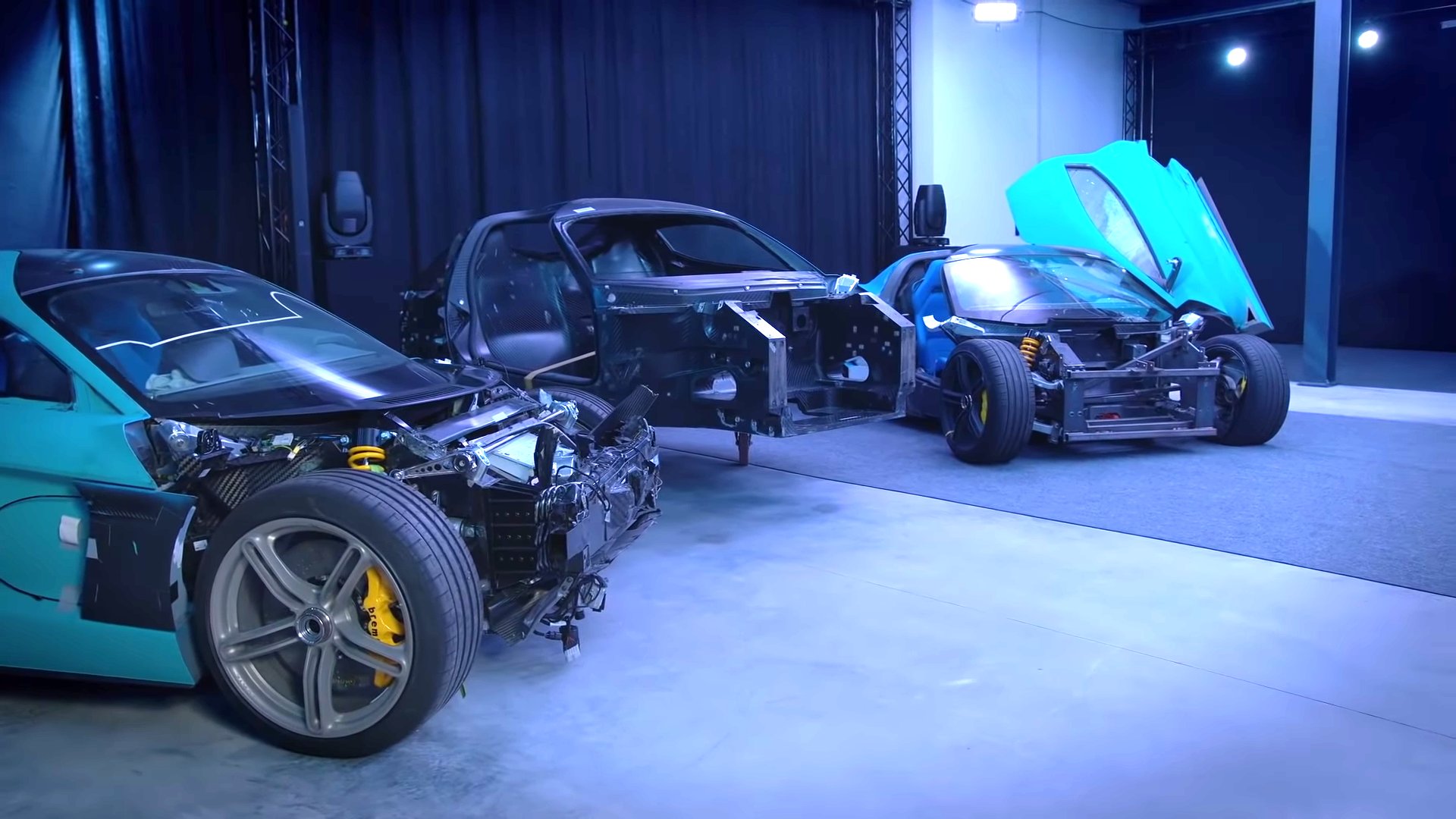

Founder and CEO Mate Rimac keeps the C_Two development process very transparent, oftentimes explaining the whole endeavor step by step through an informative Youtube series titled Mondays with Mate. In this latest installment, we get to take a look at how C_Two crash prototypes look after completing their important, yet equally destructive missions of evaluating the EV’s setup and crash performance.
We already know how much it hurts to watch a pair of C_Two prototypes getting crashed, but how about the others Rimac had to smash since the program began? With over three years in the making, the 1,914-horsepower C_Two entered its live testing phase in January 2019, starting with the front crash structure alone and then moving on to the full car.
However, before meeting their ultimate demise by damaging the monocoques after hitting a barrier at 40 miles per hour, Rimac’s first four crash prototypes also went through hundreds and hundreds of low impact tests revolving around seat, belt, and airbag calibration, material validation, and low-speed crashes that left most of the cars undamaged.

There’s also the fact that while the dummies can momentarily experience up to 35 Gs as the car absorbs a mountain of kinetic energy, once the front gets destroyed in a carefully orchestrated fashion, the prototype’s roof, doors, and rear can still be subjected to several other load and crash tests before the team needs another million-dollar test subject.
Moving into phase three of the global homologation program, Rimac will produce seven more pre-production models that—unlike the previous four—will have the correct fit and finish, as well as functional battery packs running at 800 volts. These cars will be used for dynamic, endurance, and weather testing before the crash team could get its way with them.
As for the four early cars that already have cracks through their woven carbon monocoques, Rimac will donate one to the University of Zagreb with mathematic models of the simulations and crash data, so that students can replay the process in the digital space.
Compared to metals, composite simulation technology is at its early stages, meaning that every single crash brings plenty of knowledge to the table.

Got a tip? Send us a note: tips@thedrive.com